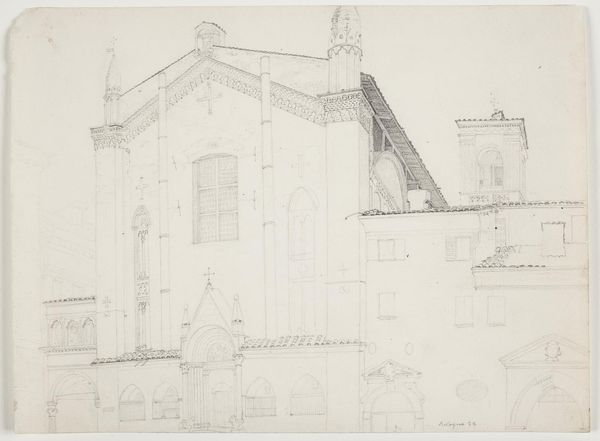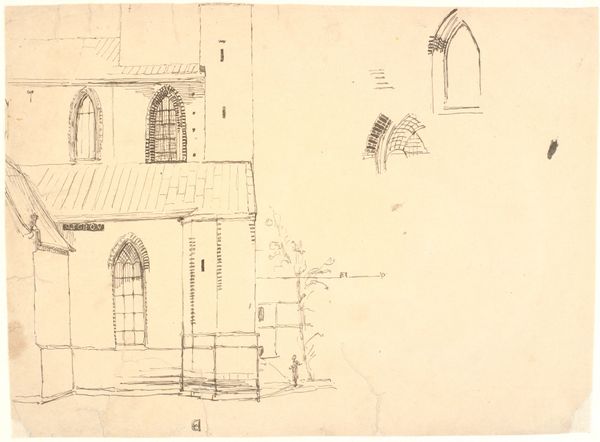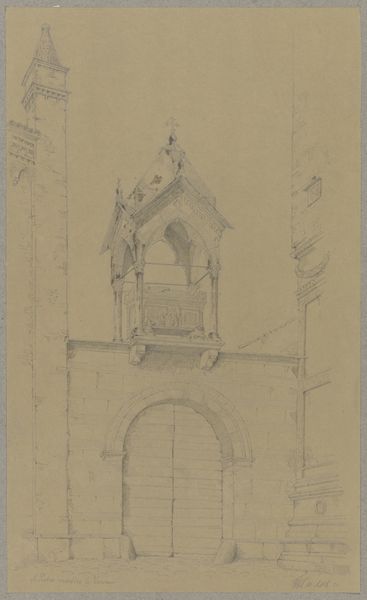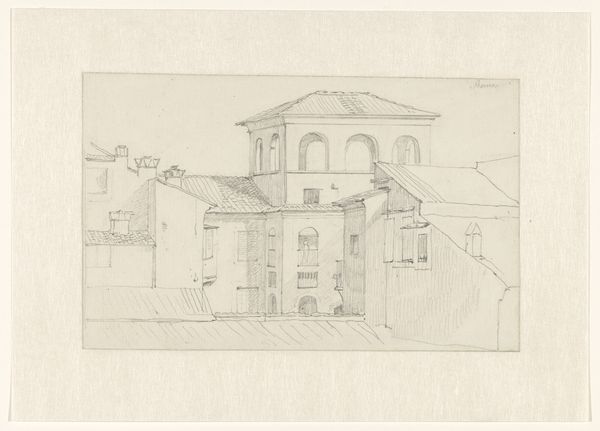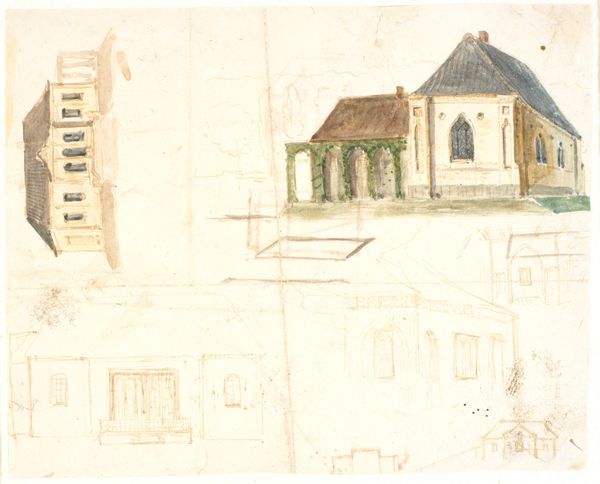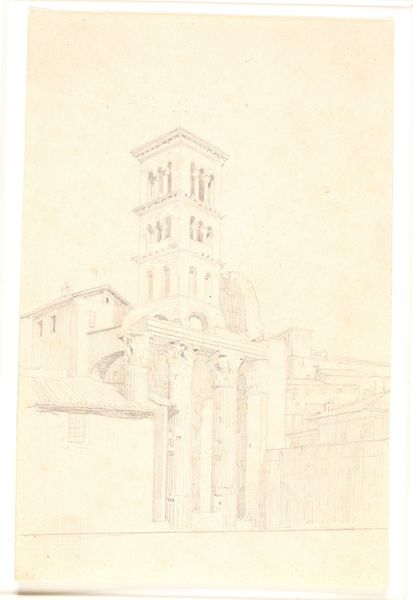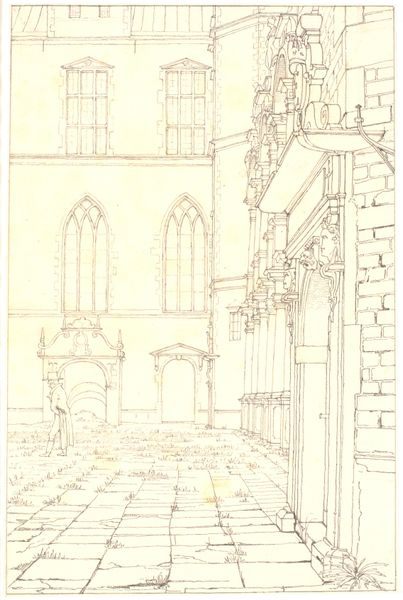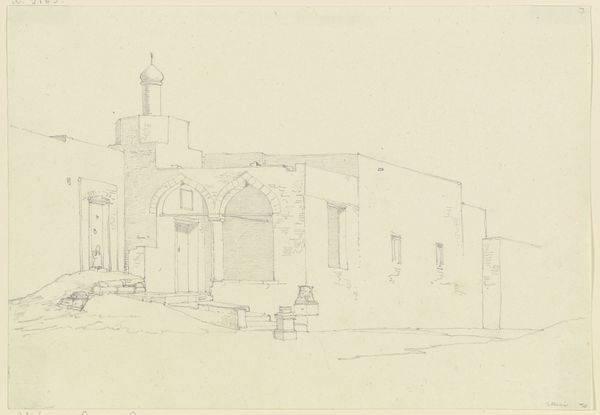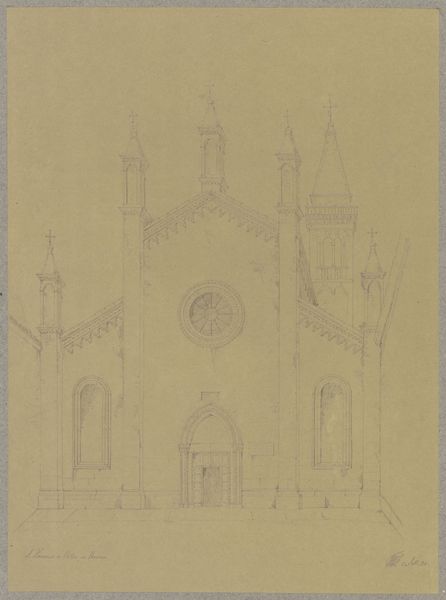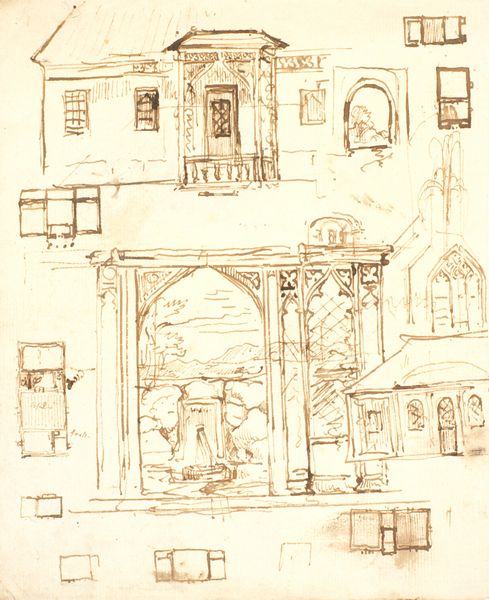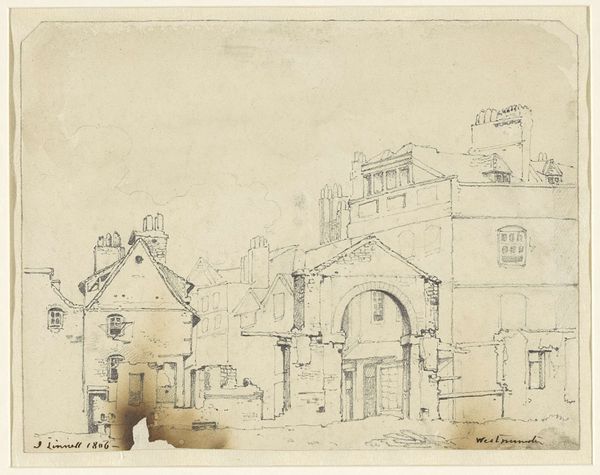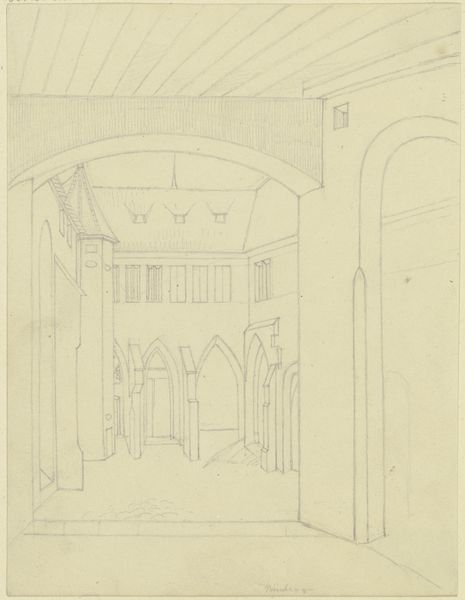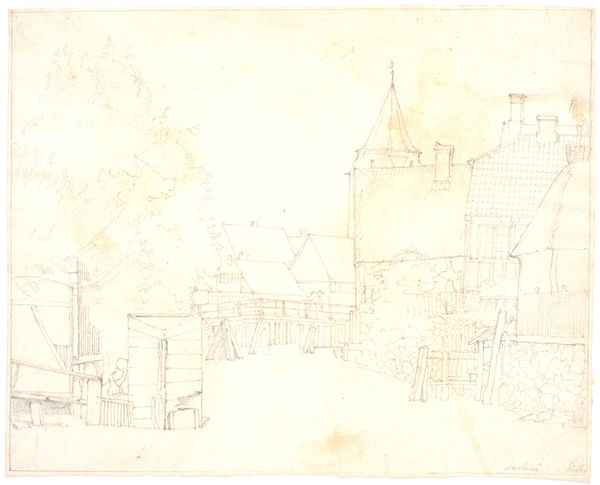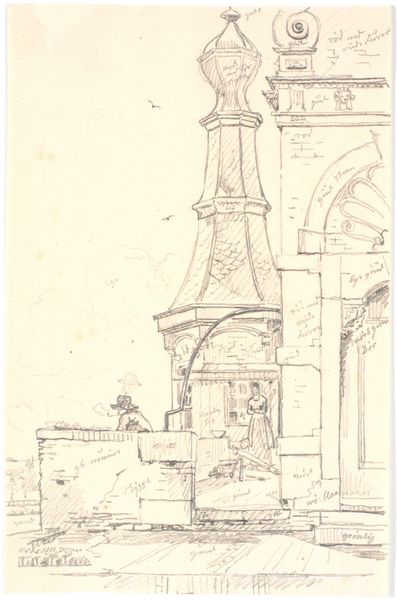
Kalke af S. Maria della Cateria i maleriet "Morgen på Piazza Marina i Palermo" fra 1844 1844 - 1848
0:00
0:00
drawing, pencil, architecture
#
drawing
#
neoclacissism
#
pencil
#
architectural drawing
#
cityscape
#
architecture
Dimensions: 247 mm (height) x 350 mm (width) (bladmaal)
Curator: Before us is a preparatory drawing by Martinus Rørbye, titled "Kalke af S. Maria della Cateria i maleriet "Morgen på Piazza Marina i Palermo" fra 1844." The drawing, rendered in pencil, dates from around 1844 to 1848 and belongs to the Statens Museum for Kunst. Editor: It feels like a ghost image. Faint, delicate lines suggest a grandeur, but it's all so preliminary. I am interested in the way that pencil is here being used for architecture; this rendering foregrounds the drawing's geometric, compositional work. Curator: Yes, the ghostly quality lends itself to contemplation. This drawing is, as you pointed out, a trace, "kalke" in Danish, taken directly from his finished painting, a study, in essence, revealing a dialogue with an existing work. Santa Maria della Catena holds strong cultural and religious significance within Palermo's cityscape, often associated with protection and maritime activities. The act of tracing can function almost as replication. Editor: And the reproduction gestures towards a commercial demand, no? He isn't only studying for his own reference, the labor implied here in his process, producing a copy, means, perhaps, he anticipates another market for this rendering beyond his personal artistic practice. Consider all the pencil strokes needed, all the rubbing, the wearing away... This is, clearly, very laborious! Curator: A relevant point. The grid structure visible underneath the faint rendering gives a sense of order and control. It could reveal that, from the outset, he may have intended to reproduce and disseminate this study. Moreover, the building's neoclassical design with its emphasis on order, harmony, and rationality represents power, appealing to those invested in this system of governance and religion. Editor: Let's not forget that paper, pencils, fixatives -- they all require a kind of access that also communicates privilege. Someone is manufacturing, someone is selling, and Rørbye is right in the middle. He is taking resources and reshaping it towards a symbolic, representational gesture. The cultural status granted here in art and architecture must be addressed... Curator: It highlights the intertwined dynamics of culture and politics and its symbolic power is what interests me most! Editor: Indeed. Materiality and meanings inform each other so seamlessly here.
Comments
No comments
Be the first to comment and join the conversation on the ultimate creative platform.
